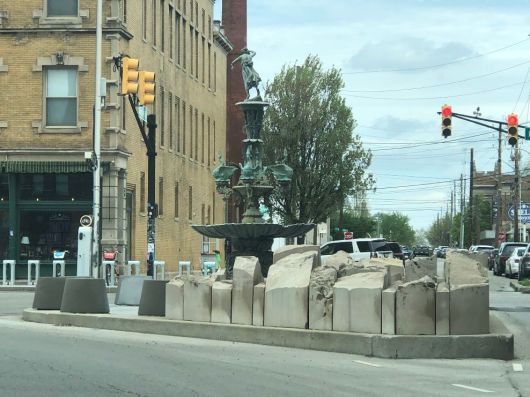Today we (Maj and our son) took Sher out for a Mother’s Day luncheon. We had finished up a couple of quick shopping stops and Sher told me she wanted to go to the Willard for our celebratory meal.

Street view, note patio seating on left

Wonderful original curved stairway

Antique marble and cast iron fireplace
The Willard is an historic building in Franklin, Indiana. The original brick house was built in 1860. Over the years different owners built more around the house, turning it into a hotel. Now it is a very popular local restaurant “where friends meet”.

Sher’s veggie pizza

That’s a basket of fries

There is a bun hiding under that

Thick delicious tenderloin!
The Willard has a surprisingly complete menu for what used to be a pizza restaurant. The nice thing about the fare is that it offers favorites that we all enjoy. Sher ordered one of her favorite things: vegetarian topping pizza. Our son likes fries, so here came his basket of fries. I thoroughly enjoyed the breaded tenderloin. This culinary delight was twice as thick as most typical breaded tenderloins.

Yes, there is a full service bar…
Today the Willard was pretty busy when we arrived at 11:30. The place was packed by 12:15. Lots of folks were celebrating Mother’s Day same as we were. This historic establishment is worth a visit when you are in Franklin, Indiana. Check the website here.













 The Air Force Museum in Dayton, Ohio has a beautiful Memorial Park filled with scores of monuments honoring different units of US Army Air Corp Units from WWII through current. One of these remembers the pilots and support personnel for the famed Republic P-47 Thunderbolt fighter that saw service in all theaters of the war.
The Air Force Museum in Dayton, Ohio has a beautiful Memorial Park filled with scores of monuments honoring different units of US Army Air Corp Units from WWII through current. One of these remembers the pilots and support personnel for the famed Republic P-47 Thunderbolt fighter that saw service in all theaters of the war.









